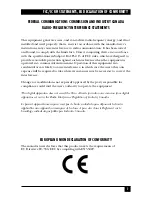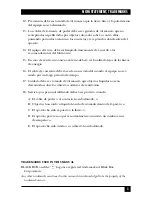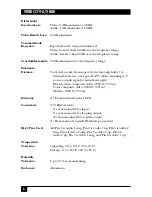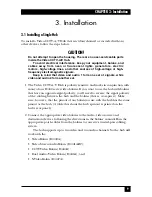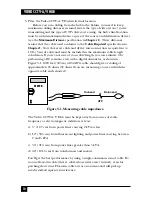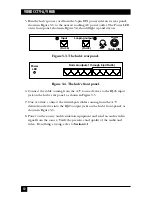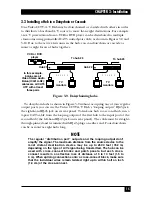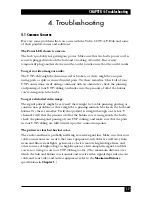
15
CHAPTER 3: Installation
3.3 Installing a Hub in a Daisychain or Cascade
One Video CCTV-A/V Hub may be daisychained or cascaded with others in order
to distribute a baseband A/V source to more than eight destinations. For example,
an A/V presentation from a VCR or DVD player can be distributed to multiple
classrooms using preinstalled CAT5 twisted-pair cable, as shown in Figures 3-9 and
3-10. Due to the active electronics in the hub, you can daisychain or cascade as
many as eight layers of hubs together.
Figure 3-9. Daisychaining hubs.
To daisychain hubs as shown in Figure 3-9 without occupying any of your regular
output ports, you can use the Video CCTV-A/V Hub’s “looping output” RJ-45 jack,
the right-hand RJ-45 jack on its rear panel. To link one hub to a second hub, run a
4-pair CAT5 cable from the looping output of the first hub to the input port of the
second hub (the left-hand RJ-45 jack on its rear panel). The cable must be straight-
through-pinned and terminated with RJ-45 plugs on either end. Your daisychain
can be as many as eight hubs long.
NOTE
The regular “distribution port” outputs and the looping output don’t
amplify the signal. The maximum distance from the source device to the
most distant destination device may be up to 2500 feet (762 m)
depending on the type of A/V signal being transmitted. The hub can be
used with cross-connect blocks and patch panels, but each cross-
connect results in an effective loss of distance of 5 to 10 feet (1.5 to
3 m). When splicing connections onto a cross-connect block, make sure
that the individual wires remain twisted right up to within half an inch
(1.3 cm) of the cross-connect.
VCR or DVD
player
Hub #1
TV
monitors
TV
monitors
Hub #2
• • • • • •
• • • • • •
To hub #3
To hub #3
In this example,
baluns are all
Video Stereo Audio
Balun (IC441A-R2);
cables are all CAT5
UTP with at least
three pairs

